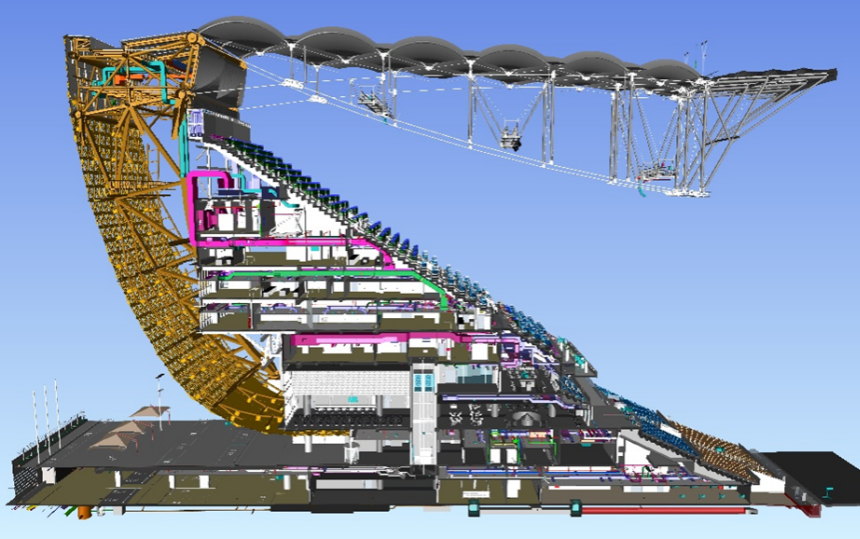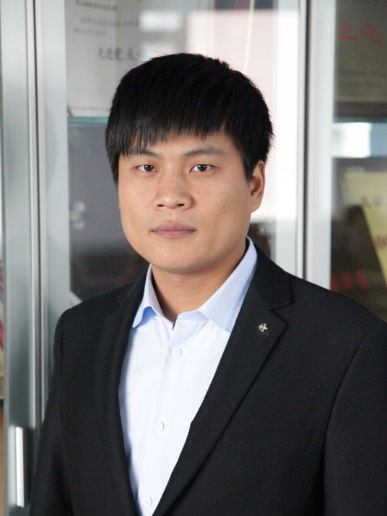The FIFA World Cup Qatar 2022 has garnered global interest. Lusail Stadium, the largest stadium in Qatar, has received acclaim as the "Crown Jewel". This stadium exemplifies "Built by China", and has been made possible with the scientific and technological expertise of Beijing University of Technology (BJUT).

The Lusail Stadium was constructed by China Railway Construction Corporation (International) Limited. Professor Liu Zhansheng from the Faculty of Architecture, Civil and Transportation Engineering at BJUT led the Intelligent Construction team. The team cooperated with the contractor to conduct research on the construction standards and key technologies for implementing intelligent construction in the stadium. Professor Liu said, "Our team has mainly carried out research on key technologies for the intelligent construction of the steel structure of the Lusail Stadium, as well as research on the full life cycle digital twin technology associated with it. Our findings provided technical support for the successful delivery and operation of the stadium."

The Lusail Stadium was constructed on a 195,000-square-meter plot. As the world's largest single cable-membrane roof span building, Lusail Stadium has the world's most complex cable-membrane structure system.
Professor Liu added, "The complex structure of the Lusail Stadium brought great challenges to its design and construction. Only by introducing digital and intelligent technology, and adopting new construction and management methods can we solve the construction management of such large overseas projects, involving problems such as relative isolation and dispersion and the obtaining of static information."

Due to the pandemic, the team was unable to physically visit the Lusail Stadium construction site for technical exchanges and to provide guidance. To guarantee the timely and exemplary completion of the project, the team members communicated with technicians at the construction site via online meetings. As the project progressed on schedule, the Lusail Stadium gradually materialized from a blueprint into an amazing, world-famous landmark.
Professor Liu also said, "In recent years, the team has relied on the platform provided by BJUT to delve into the research and engineering practice of intelligent construction technology. We are deeply honored to have been awarded the Second Prize of the 2021 Beijing Municipal Science and Technology Progress Award for our innovative application of intelligent construction theories and methods. In the future, we will persist in our endeavors to further integrate modern information technologies such as digital twinning, BIM, and artificial intelligence, to develop key technologies involved in intelligent construction, operation, and maintenance, and to make contributions to the 'Built by China' brand". BJUT will continue to support the research teams to promote "Built by China" projects around the world.
Profile of Professor Liu Zhansheng

Dr. Liu Zhansheng, Senior Engineer, Professor, and Supervisor of Doctoral Candidates; Coordinator of the BJUT Intelligent Construction Program
Dr. Liu is mainly engaged in research on intelligent construction and intelligent operation and maintenance, digital twin and BIM technologies, and long-span pre-stressed steel structures. In recent years, he has presided over, or played a major role in, more than 40 national, provincial, and industrial research projects. He has authored and published over 100 papers, including more than 40 SCI-indexed ones, filed applications for more than 20 patents, and obtained 16 software copyrights. He has achieved nearly 20 science and technology awards, including two second prizes of the Beijing Municipal Science and Technology Progress Award (both ranking No. 1). He has supervised the technical consultation and R&D of over 80 projects, including the 500-meter radio telescope (FAST), Beijing Daxing International Airport, the APEC Conference and Exhibition Center, and the Bobsleigh and Luge projects for the 2022 Winter Olympics.







